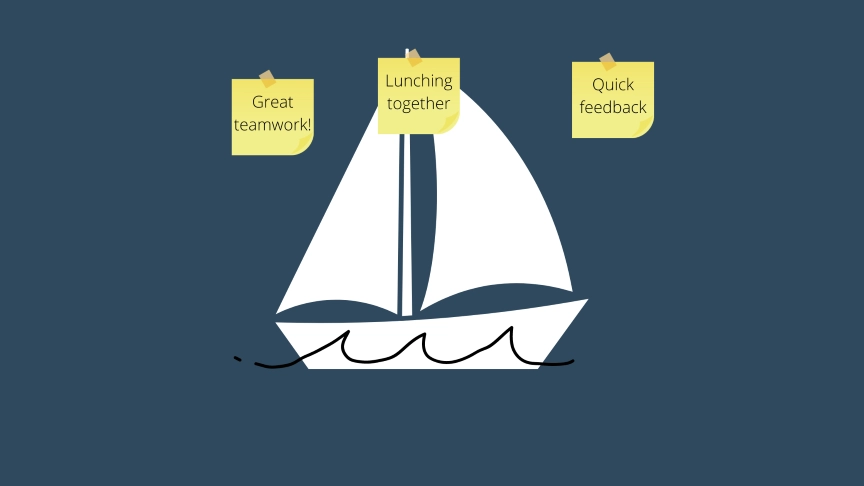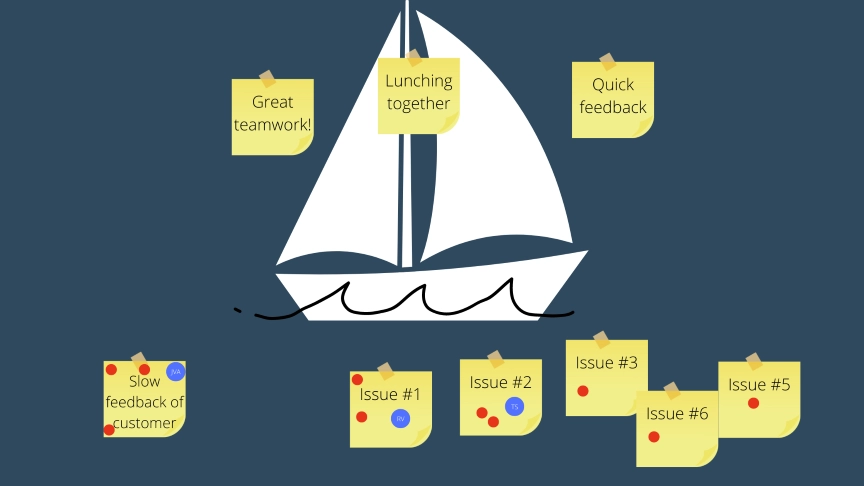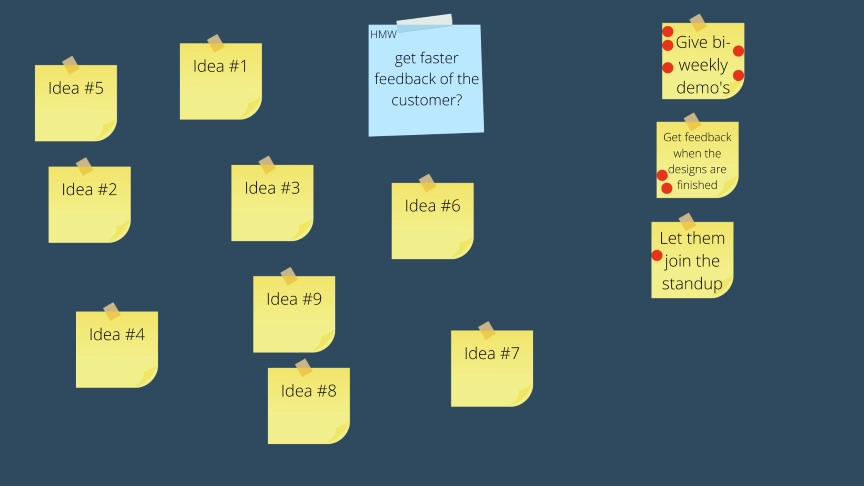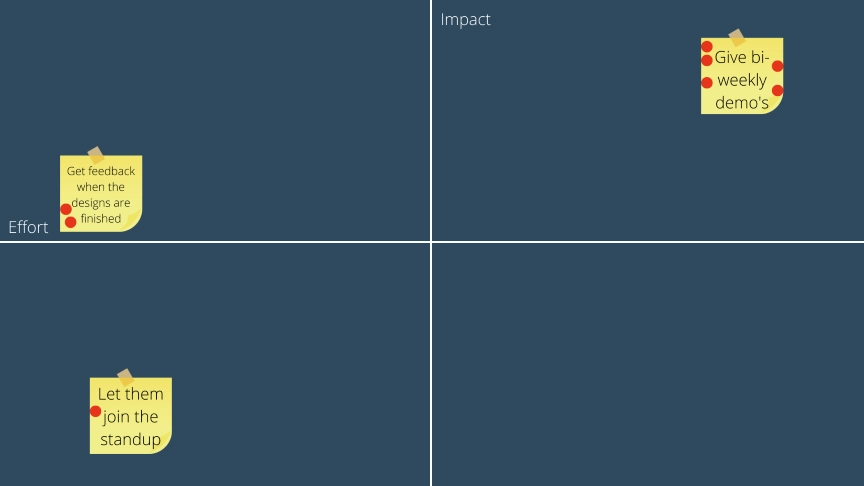Running a Successful Retrospective: The Lightning Decision Jam by AJ&Smart
Running a Successful Retrospective: The Lightning Decision Jam by AJ&Smart
Introduction
One of my favorite exercises to run a retrospective is the lightning decision jam (ldj) by AJ&Smart. This formula enables the team to contribute equally throughout the retrospective and produce solutions to the creative problem each team member faces. Strong extroverted people do not have the opportunity to push down on some more introverted types. The exercise does it by forcing people to work together alone.
If you don't know what retrospectives are. You can read my previous post.
So, let me tell you how I run the Lightning Decision Jam.
The sailboat
The sailboat is a straightforward exercise. After this exercise, the team reviewed what is helping them move forward and what is holding them back.
Wind in the sails
The first questions the team needs to answer are the following:
- What is giving us wind in the sails?
- What is moving us forward?

After the teams answered these questions on sticky notes, they present their answers to the team and stick the notes up on the sail. Now you have an overview of what is working for the team and is moving them forward.
So let's say Jonathan is going to present his sticky notes.
"I love lunching together. It creates great team dynamics. I get great feedback on our work. The feedback enables me to improve my work over time. Also, in the last period, we had great teamwork! Everyone was open to helping me with my tasks."
Our anchor
The second question the team focuses on is the anchor. They answer the following questions:
- What is our anchor?
- What holds us back from moving forward?
After, the team wrote their questions on sticky notes. They come to the sailboat and stick their notes to the bottom of the sailboat. This gives you a list of all the challenges the team faces. But where do they need to put their focus? In the next step, the team chooses its focus point.
Vote!
A list of issues the team faces is an excellent step for improvement. But you can't solve them all! By voting, the group chooses where they need to set their focus on what they want to improve.
I love to do two-layer voting.
- Heatmap voting - give each team member 5 votes to spread them on the bottom part of the sailboat. Everything is allowed. You can put 5 votes on one issue and vote on your own problem.
- Straw poll voting - give each team member a vote with their initials. Let them choose one issue from the bottom of the sailboat.
After the 2 minutes, each member explains why they chose that particular issue.

When everybody has explained their vote, it is time to reorder the issues they are facing. You can use the following strategy:
- Heatmap vote: 1 point
- Straw poll vote: 2 points
The top-voted problem goes to the.. top. Try to make a top 5 of the voted problems.
Opportunity question
With a prioritized list of issues the team faces, we can now see where our opportunity is. A problem statement is hard to brainstorm around. But we can reframe problems to an opportunity question.
The opportunity question can be formulated using the 'How Might We' structure.
Let's take the slow feedback of the customer as an example. We can transform this issue into an opportunity. The 'How Might We' question becomes the following: "How might we get faster feedback from the customer?"
10 for 10
The 10 for 10-exercise focuses on brainstorming. We take one opportunity question created in the sailboat exercise and develop ideas on the 'How Might We' question. So we'll take the "How might we get faster feedback from the customer?" and put it on the top of the board.
Brainstorm
When you've set the board, it's time for the team to brainstorm around the 'How Might We' question. Let the team write as many ideas as possible that they think are low effort and high impact.
When the 8 minutes pass, the team puts all the ideas on the board. Don't categorize and remove duplicates without discussion.
Vote!
Here we'll only be going to use the heatmap vote. Give everyone 5 voting dots. Give everyone 5 voting dots.
When the 5 minutes pass, you revisualise the ideas on the side of the board. The top-voted solution goes to the top. Only take the post-its with votes.

Effort impact scale
After brainstorming on the 'How Might We' question, we have a list of ideas the group thinks will help us improve.
But you probably should not act on all these solutions the team created. When creating actionable tasks for your retrospective, it is good to know which action to take first.
Here comes the effort impact scale!
The effort impact scale is a matrix that visualizes how much effort is against the impact of an idea.
The effort impact scale is a great way to test the ideas created in the 10 for 10 exercise. The Y-axis represents the impact of the idea. The X-axis represents the effort to be put into the idea.
Impact
You'll start with Impact first.
You take the ordered ideas from the 10 for 10 exercise and take the sticky note with the most votes. You start in the middle of the board and ask the group: "What impact will this idea have on us as a team? Will this be higher or lower on the impact scale?"
Leave the ideas on the Y axis.
Effort
Now you'll go through each idea that sits on the Y axis and ask the team: "How much effort will it take for us as a team to realize this idea? Will it be more effort or less effort on the scale?"
After this exercise, you'll have the ideas visualized on the effort impact scale.

Now it is time to tell the group what actions to take!
⬆⬅️ Top left
The top left are ideas or experiments you can do now!
⬆➡️ Top right
These are projects you can do in the future. You'll probably do these if none of the top-left ideas didn't work. These ideas are our higher-effort solutions.
⬇️⬅️ Bottom left
You can put these ideas on a backlog, so you'll find them back. You don't need to act on these just yet.
⬇️➡️ Bottom right
Ignore these ideas. Throw them in the 🗑️. These are higher-effort solutions with a low impact.
Create an action item
First, you'll take the ideas from the top left on the action board to create actionable tasks.
When creating an action item, it must be actionable. You can do this easily by putting them in the following format:
- What?
- Who?
- When?
- Reflection date
The reflection date is used to reflect on the experiment and see if it is working or not.
So in our example, we'll take only one idea as an experiment to run: "Get feedback when the designs are finished"
This action point of the retrospective becomes:
What? Get feedback on our designs from the customer.
Who? Matthias
When? When the designs are finished, we contact the customer to give their review.
Reflection date: 1 September 2022
We'll keep the other idea from the top right in our backlog on things we can do to improve.
What? Give demos to the customer.
Who? Matthias
When? Every two weeks.
Reflection date: To be decided when trying out this experiment.
Retrospective recap
The team went through 3 exercises of the lightning decision jam. They started with what worked for them and then listed what was holding them back. They focused on one issue, "Get faster feedback from the customer" and brainstormed on how to improve their issues. Then they visualized these ideas on the action board to decide which action to take first.
The team's plan is now to get feedback on our designs from the customer, and Matthias will execute this task. On the first of September, we'll reflect on this experiment. If this is working, we can continue, and if it is not, we can try the other experiment of giving bi-weekly demos to the customer.
Conclusion
The lightning decision jam by AJ&Smart is a powerful way to produce solutions for our creative problems. It helps team members discuss challenges in a structured way and helps them not to lose focus during the meeting.
At the end of the lightning decision jam, you'll have high-impact solutions with a low effort.

